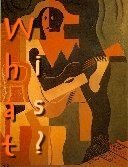| News Guides Performances What Is Music? | ELLOPOS | ||||
| ERNST BLOCH | |||||
| From: Ernst Bloch, Essays on the philosophy of music, tr. by P. Palmer | |||||
|
The difference between artistic rules
in counterpoint and the laws of truth in logic was no obstacle to this
cross-connection. For, leaving aside the status of music in the quadrivium
as one of the seven liberal arts, scholastic logic had for some time
ceased to maintain epistemological aims like those of Aristotelian logic.
Rather it had extensively developed into a theory of formal consequences,
especially in changes of judgement, as we see in the textbooks from Petrus
Hispanus onwards. Counterpoint was a variation on a theme in several
parts, ex una voce plures faciens, through inversion, imitation,
cancrizans and so forth. Scholastic logic laid down variations and
combinations of elements of formal judgement, ex uno judicio plures
faciens, through conversion, contraposition, subalternation, modal
consequence and so forth. To these consequences were added the
conclusions, or modes of the concluding figures, which rest upon the
different combinational possibilities of the premises; the actual art of
combination had been borrowed from mathematics back in Alexandria.
Admittedly we cannot compare more closely the 'arithmetical model' of the
fugue (also called conseguenza in fourteenth-century Italy) and the
'jigsaw puzzle' of scholastic logic, because the material is too
disparate. But in both fields we find a remarkably similar spirit; it was,
after Petrus Hispanus, essentially one of a formally correct working out
in logic as much as in music. It was a rationalism of sorting-out
[Auswicklung] and subsumption as opposed to the more recent rationalism of
development [Entwicklung] and generation. It is this legacy which brings
to musical form -besides the aforesaid danger- a special dignity, particularly if this dignity
is linked with the essential articulate expression which it is its sole
purpose to embody. And now we return to the most famous
argument behind all this revelling in musical laws: the harmony of the
spheres and its offspring, the cosmic theory of music. For in its
mythical-utopian archetype, we find another character besides the half
Pythagorean, i.e. besides the apparent correlation of musical laws per
se. It is a matter of opening up this other character by human means
and thus disrupting the connection with the cosmic theory of music. This
theory held sway for all too long, but it taught the musical work to think
a very great deal of itself. Through the Pythagorean ban on thirds and
sixths it hindered music's development, but it gave the music that came
into being the ambition to achieve an enormous correlate. Although it was
an ungodly astral myth, it provided the dream of musical perfection with a
counterpart to what was for so long the purported canon of the cosmic
system in architecture. Indeed whereas this canon (up to the temple of
Solomon) often applied only in a poetic sense or in esoteric schools,
heavenly music was actually associated with earthly, learned music and
served as its ideal model in scholastic reasoning, from the beginning of
the latter until long after its heyday. 'Early mediaeval musical theory was
as staunch an adherent to the music of the spheres as the Pythagorean
school itself ...Thus the proposition of the Church Fathers that Church
music comes from God and has its model in the singing of the heavenly
hosts found a certain degree of philosophical support' (Abert: Die
Musikanschauung des Mittelalters, 1905). Music's temple of Solomon was the
song of the planets and, after St Augustine, the song of
the angels; intervals, which the Pythagoreans equated with the distances
between planets, now corresponded to the ordines angelorum.
But even in Christian thought, the link with the planets was never broken.
St Ambrose, the founder of Christian church music, actually taught that
the mysterious music of the universe was the archetype and prototype of
earthly music, and King David was supposed to have introduced the art of
psalmody in imitation of the song of the planets (the heavens praise the
glory of God everlasting). The Carolingian music scholar Aurelian of Rťomť,
one of the most influential revivers of the Greek modes, always connected
the eight modes
with the heavenly motions, but his doctrine also stated that 'In hoc (sc.
cantandi officio) angelorum choros imitamus'. Thus music acquired a
framework which was both cosmic and sacred, with gradations, and which united Ptolemy and mystical emanation.
Already, BoŽthius had taught the following classification: first, musica
mundana, the universal motion determined by proportion and number;
next, musica humana, the ensemble of body and soul; and lastly musica
instrumentalis,
the lowest, audible emanation. The celestial heptachord was associated
with the intervals and modes, and the angelic choir with the ancient
Christian antiphonal and responsorial chant. Even the innovation of the
polyphonic canon did not lack the sound of the spheres as a model. |
|||||
|
|
|||||

